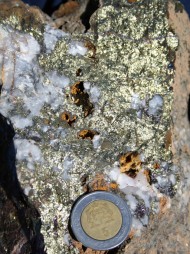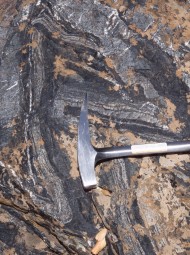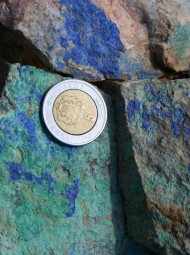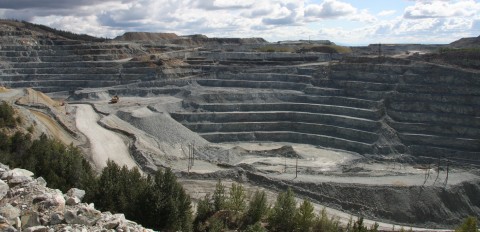Redstone Exploration Services
Lithoteque
OVERVIEW
Mineral deposits are part of humanity's natural heritage, yet, understandably, they get destroyed as they are mined, and this is a normal process. We believe that a record of their mineral wealth should be preserved, for the sake of the future generations, for the sake of ore genesis research, as well and importantly for the sake of mineral exploration. This is obvious: you maximize your chances to find new deposits if you understand how they form, the geological setting in which they occur ('the elephant country'), and what they look like. What is of interest is not just the ore, but also the alteration patterns surrounding the deposit, as typically they constitute a much larger (= easier to find) exploration target than the orebody itself. Therefore, mineral deposit systems need to be looked at holistically, as a whole.
The goal of the initiative recently started by Redstone is to assemble, digitize, and put online for free internet access, representative ore suites from a variety of world-class ore deposits, with the ambitious aim of capturing down the road one deposit of each 'type'. In contrast to a similar such initiative (not referred by name), the emphasis here is on making this digital collection accessible worldwide for free, and on assembling for each type locality an as complete rock suite as possible, including the full host rock stratigraphy, the alteration styles, the full variety of ore textures, as well as any structural features of interest, such as breccias, etc. Because of the mammoth size of the task, involving ca. 100-200 samples per deposit, and because this exercise is entirely privately funded and carried out in 'off-duty' time, the initial focus is on establishing a collection of 'rough' grab samples and polished slabs, including drill core. In the future, polished blocks and thin sections for reflected/transmitted light microscopy will be prepared from material set aside. In addition to the gallery of hand specimens & polished blocks, each 'type locality' will be accompanied by a summary deposit description, a geological map with cross-sections, a genetic model, a list of exploration guides, a reference bibliography, and possibly a set of underground/on-site photographs.
We trust that when this initiative is more advanced, it will be of as much use to the Mineral Industry as to Ore Research, and that it will fulfill its two principal goals: preserving a fabulous natural heritage and contributing to increasing the knowledge of mineral deposits, and, importantly - finding new ones!
I would like here to acknowledge and thank my colleagues from Industry & Academia who helped with this exercise so far, and solicitate further assistance, advice, and possible donations, which will be indispensable, as this collection grows. I would also like to ask potential users for their patience, as this is a very time-consuming task, which is unfolding slowly, but as you know for us, geologists, time has an entirely different dimension...
ORE DEPOSIT MODELS & LITHOTEQUE
This part of the website is currently under construction, but here are the first upcoming five deposit types, together with an expected timeline:
- Mississippi Valley-Type zinc-lead - Pomorzany deposit, Silesia, Poland (Q3 2015);
- 'Irish type' zinc-lead - Lisheen / Galmoy deposits, Ireland (2016);
- Lode type tin (-copper) - San Rafael deposit, Cordillera Carabaya, Peru (Q1 2015);
- Kupferschiefer copper (-silver) - Rudna / Lubin deposits, Poland (2016);
- Magmatic nickel-copper - Sudbury deposit, Canada (2016).
To access the models & lithoteque, click here
The sheer size of modern open-pit mining (BC, Canada)



